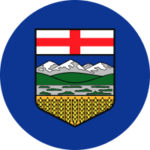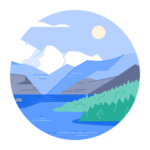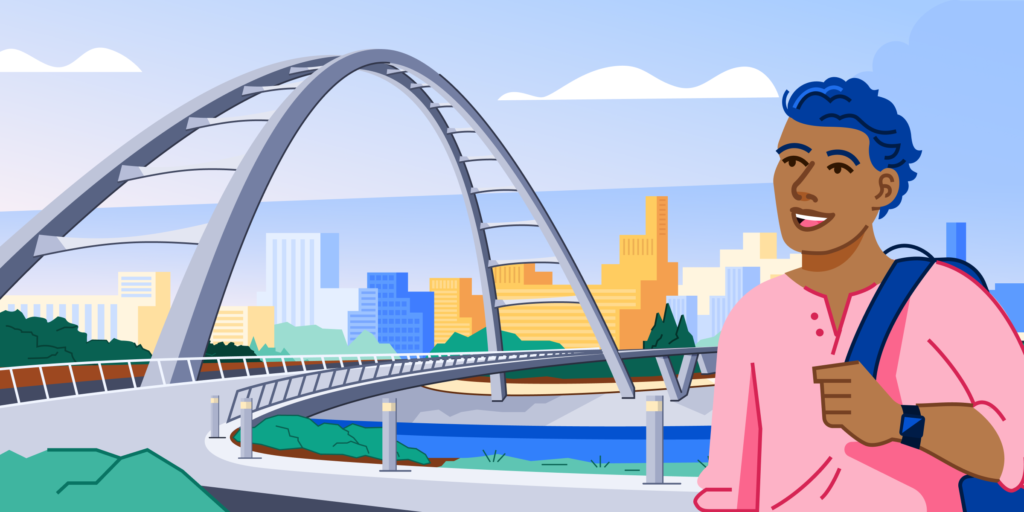Here are a few fast facts about Alberta, one of Canada’s prairie provinces and a study abroad destination that’s rising in popularity amongst international students.
Curious about studying in Canada? Check out our undergraduate and postgraduate student application guides!

Official Alberta Symbols and Stats
Alberta’s official flower is the wild rose, and the province’s motto is “Fortis et Liber” (“Strong and Free”). Both of these symbols reflect the independent attitude of many Albertans.
The province’s coat of arms (seen in the image above) shows the province’s natural diversity. It also reflects the many energy, forest, and agricultural reserves that contribute to Alberta’s growth and prosperity.
Alberta has an area of over 600,000 square kilometres. It is also home to more than over 4.695 million people, as of July 2023.
Looking for study options? Here’s our list of 7 great Alberta colleges and polytechnics for international students!

Explore Alberta
International students who choose to study in Alberta can find sparkling glacial lakes, postcard-worthy mountains, and miles of both boreal forest and ranching farmland there. Tourists flock to Alberta to explore Canada’s oldest and most visited national parks, Banff and Jasper. Alberta’s capital city, Edmonton, and urban industrial hub, Calgary, also prove that there’s much more to Alberta than its natural beauty.
Edmonton is the northernmost city in Canada with a population over 1 million people. Its West Edmonton Mall is the largest mall in North America. In addition to shopping, the mall has a skating rink, a water park, and an amusement park. Major industries include energy, construction, health care, agriculture, and financial services, with a growing reputation for nanotechnology and AI. Edmonton gets up to 18 hours of sunlight in the summer! This means you’ll have long days to enjoy festivals, shopping and theatre on Whyte Avenue, exploring the Arts, Ice, or Brewery Districts, or the many museums and galleries.
Calgary is Alberta’s largest city, and was ranked the world’s third-most livable city in 2022 by the Economist. It may be best known for hosting the annual Calgary Stampede, the world’s largest outdoor rodeo, but offers a lot more beyond stagecoaches and cowboys! Calgary’s economy prospers from industrial development in the energy, financial services, film, health and wellness, aerospace, technology, and transportation and logistics sectors. Plus, Calgary is popular with outdoorsy folks, thanks to how close it is to Banff and the Canadian Rockies.
Red Deer, Alberta’s third-largest city, is a growing community with a long agricultural history. However, this central Albertan city is gaining steam as an entrepreneurial hub, with a more affordable cost of living. Other main industries include mining, oil and gas, health care, and construction.
Alberta has led Canada’s economic growth for the last two decades. This is in part due to its plentiful natural resources and diversifying economy that attracts innovators and entrepreneurs.
Ready to start your study abroad in Alberta? Explore top schools on ApplyBoard!



